Travel photography is all about knowing your essentials. It's important to pack light and be quick on your feet, but it's doubly important to really know your gear. Bringing a cool new device, whether it be a new camera body or a simple filter, is not a great idea. To ensure a fail proof shoot, bring the gear you trust.
Each trip and adventure is different. As a result, items are added and subtracted from my gear bag depending on the exact nature of the journey. When I'm on a boat up in Alaska, for example, I'll add a 300mm f/2.8 and a 2x. If I'm someplace "funky," I'll maybe bring a fisheye or maybe a macro for those small details. With that said, here is my essential travel gear.
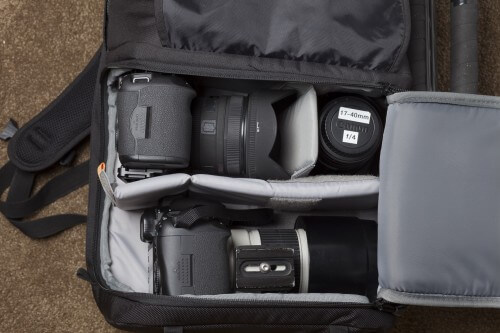
I never travel on a major trip with only one camera, and I don't count my phone as a camera either (at best it's a back up to the back up). My main camera is a Canon Mark III which I'll use for about 80-90% of the shots. From time to time it's nice to have a second camera ready without changing lenses and that's where the 7D plays a part.
It can also be helpful when needing a longer reach for wildlife or sports type action. And of course it's the back up should something happen to the Mark III. I use black electrical tape to cover as many logos and unnecessary markings to tone down the appearance.
Pro Tip #1
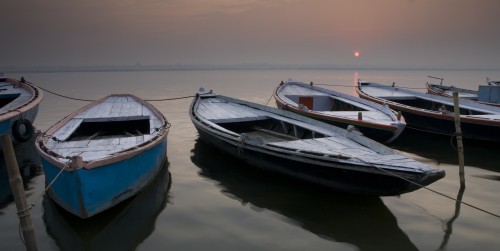
The key to this photo is a super slow shutter and a high F-stop. There was an abundance of light in the background whereas the beach had very little. A tripod would be preferable in this situation, but I just used my 24-70mm lens with an f/22, ISO200 and exposure. Also, having my Rocket Blower and cleaning supplies came in handy in this particular situation. After a day on the beach, I spent the beginning stages of this sunset cleaning!
I love the f/4 zooms. They are lightweight, constant aperture and very sharp. Are they the sharpest money can buy? No, but they are more than good enough for my needs.
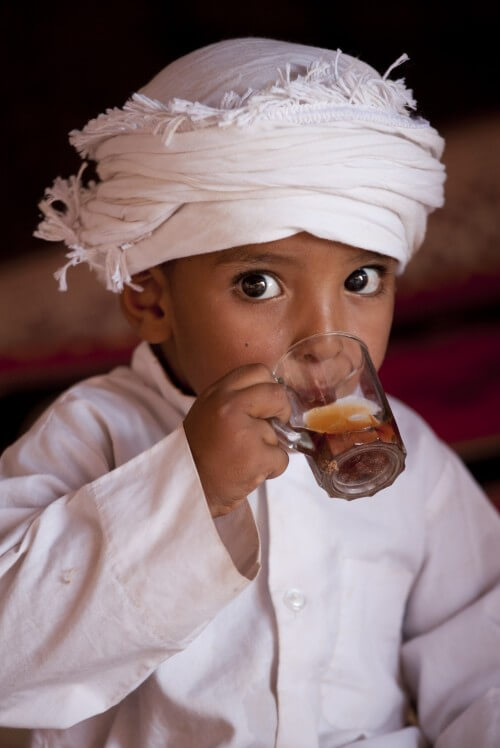
The 50mm is great for street shooting. I prefer it over the 35mm as I don't like intruding on people’s personal space. When travelling, we often forget that we are entering a new society. Sometimes that slight difference, when you need to get a bit closer to get everything in frame (with a 35mm), you can disrupt the people and life in front of you.
I usually chose to bring 3 extremely different lenses. I like to bring 3 such lenses because it makes lens choice extremely easy. There's never really a question in my mind as to what lens would be best:
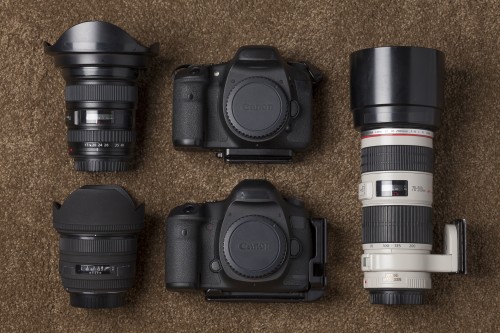
- The 17-40mm for interiors, architecture and landscapes
- 70-200mm for distant action, compression and details
- 50mm for low light and when I need something between the other two.
On my last notable trip with this collection of gear, 40% of the keepers came with the 17-40mm, 40% with the 70-200mm and 20% with the 50mm.
Pro Tip #2
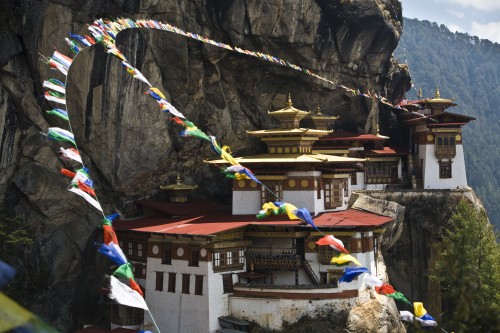
Sometimes it's a tough call, but using the 17-40mm is a great choice for capturing vibrant light and a rugged landscape like this one.
Photo Accessories
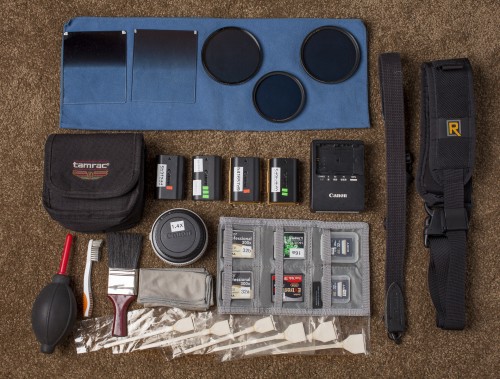
The following accessories are quite standard and trustworthy.
I've traveled in some areas with a lot of dust and dirt floating in the air so I have lots of cleaning gear: multiple cleaning cloths, brushes and sensor cleaning supplies. When shooting with filters I pull the filter case out and clip it onto my belt for easy access.
Canon Extender EF 1.4x III
This is really the perfect add-on to any Canon super telephoto lens. The communication between lens, extender and the actual camera body is phenomenal. It can be your best friend when trying to get up close to tough to capture images (sporting events, nature shots, etc).
3-Stop Graduated ND filter
2-Stop Graduated ND filter
No filter, and I mean no filter, can substitute for being in the right place at the right time when the light is just perfect. That said, all because you are travelling doesn’t mean that these types of moments will become more frequently. You still need to carry a few essential filters.
77mm Polarizer
77mm Slim Polarizer
Some people might see having more than one polarizer as excessive for a travel pack, but not having to share between lenses is a huge time saver, which can be the difference between getting that perfect shot from a bus window or before a sunset, etc.
Memory Card Wallet with Cards – Far too often people don't take proper care of their cards. You could argue that they are the most valuable piece of equipment in your bag near the end of your trip, so take great care of them with a solid wallet and plastic cases.
Filter case for 5 filters – Similar to the memory cards, keeping your filters in good shape is crucial. There's no point in carrying them around, weighing down your pack, if they aren't in condition to use.
Large cleaning cloth
2 x small cleaning cloth
Rocket Blower – With all the dirt and dust that you inevitably gather on your gear while on the road, a rocket blower is pretty crucial to have in your bag.
Old toothbrush - Yes, an old toothbrush.
Paintbrush
2 x camera straps -You'll have your camera on your shoulder all day. Get a quality strap.
4 x camera battery – If you find yourself in one of those picturesque places or moments, don't be the guy who doesn't have enough juice left in the battery to get the perfect shot. I feel that 4 batteries is more than sufficient for any day out shooting.
Battery Charger.
General Accessories
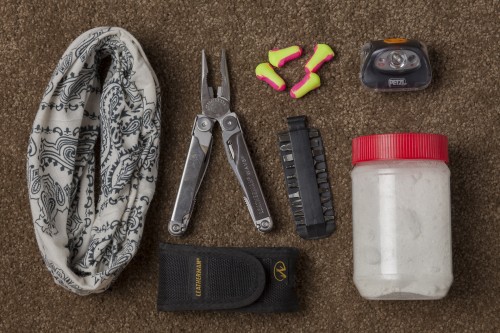
The five non-photography essentials I'll never leave home without are all small and very helpful on the road.
- The Buff works as a neck gator, hat and a cleaning cloth in a pinch.
- The Petzel headlamp is super small, very bright and has a red light for maintaining your night vision when shooting in the dark.
- The Leatherman Wave is great as it has replaceable tools that fit everything I might take. The only problem is that I can't carry it onto an airplane.
- The mystery white powder – detergent, for cleaning clothes in the sink.
- Earplugs for noisy campgrounds, thin hotel walls and loud airplanes.
John Greengo is a life-long resident of Seattle, and not surprisingly a typical Northwest outdoor adventure lover. He picked up his first camera at the age of 10, and has since been lucky enough to travel to amazing locations on all seven continents. Between major journeys, John teaches photography. He uses a unique blend of illustrations, animations and photographs, all of which makes learning photography easy and fun. John's teaching a free Travel Photography course on creativeLIVE this Friday (12-7 EST).
Thank you so much for this post. It was a very straightforward explanation on what I can do now to have better photos. I just got a dslr so I am very excited to use these tips.
ReplyDeleteLaptop and Camera Bag Backpack